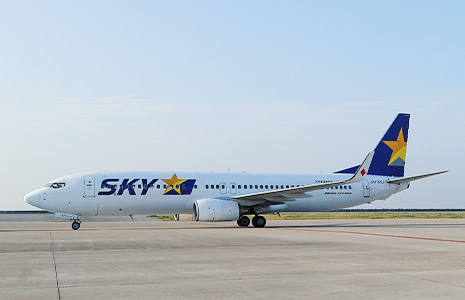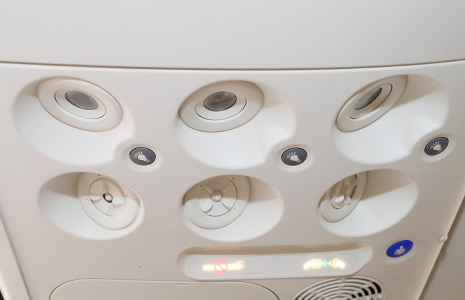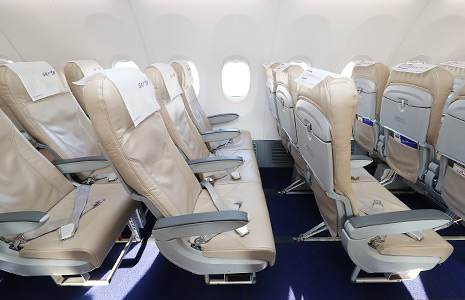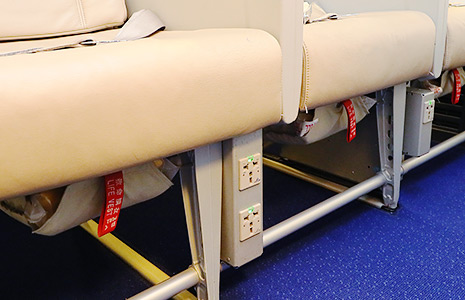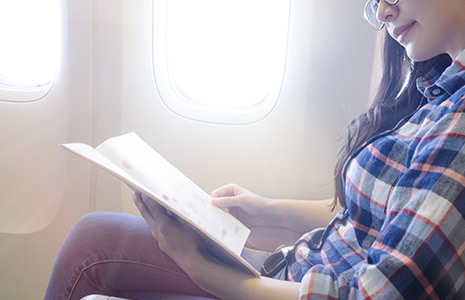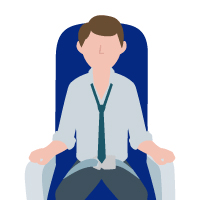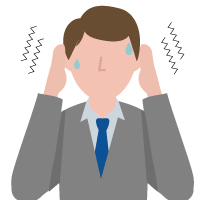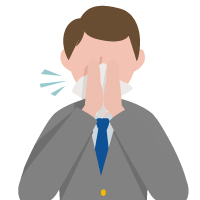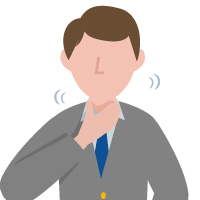Usually, the plane flies at an altitude of 9,000 to 12,000 meters (30,000 to 40,000 feet), and cruises at speeds of 900 km per hour, which is close to the speed of sound.
The aircraft cabin is pressurized because of the low air pressure in the sky. However, the cabin pressure is lower than on the ground, and is similar to if you climbed a mountain of around 2,000 to 2,500 meters (about one fifth of Mt. Fuji).
The plane has comparatively little vibration and shaking, and has the advantage of allowing unwell customers to rest safely. However, the flight time, altitude (pressurized state within the cabin), and weather conditions may have an adverse effect on anyone who is unwell, and so some customers may not be able to fly depending on their symptoms.
